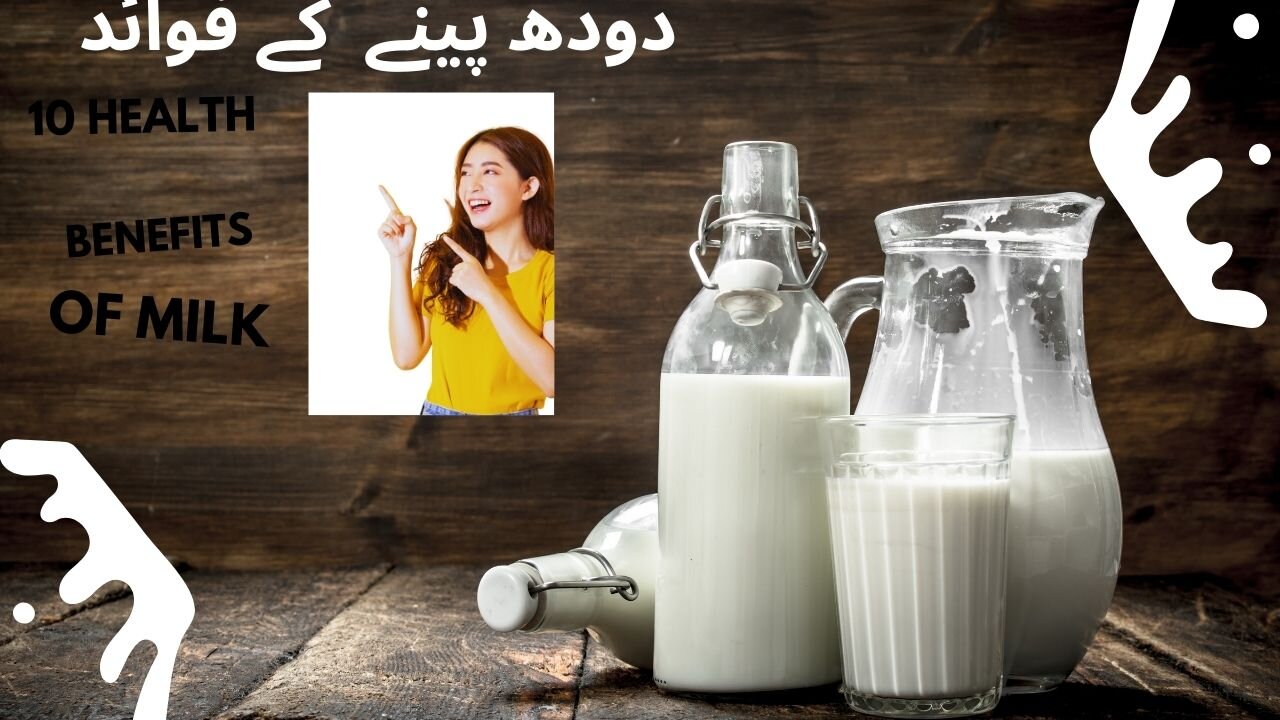Premium Only Content

milk benefits 10 health of milk #daily #milk #all #health #fitness #video #youtube #amazingfacts
milk benefits 10 health of milk #daily #milk #all #health #fitness #video #youtube #amazingfacts Milk is a versatile and widely consumed dairy product that plays a significant role in diets around the world. Here are 500 words discussing the various uses and importance of milk in different cultures and cuisines:
Milk, a nutrient-rich liquid produced by mammals, has been a staple in human diets for thousands of years. It is a versatile ingredient that plays a crucial role in various culinary traditions, serving as a primary source of essential nutrients and a base for a wide range of delicious dishes.
One of the most common uses of milk is as a beverage. In many cultures, a glass of cold milk is enjoyed as a refreshing and nutritious drink. It provides an excellent source of calcium, vitamin D, and protein, making it an essential part of a balanced diet, particularly for growing children and maintaining strong bones and teeth throughout life.
Milk also serves as the foundation for numerous dairy products. Cheese, yogurt, and butter are all made from milk through various fermentation and processing methods. Each of these products offers its unique flavors and textures, contributing to the diversity of world cuisines.
Cheese, for example, is an integral part of the culinary traditions of many countries. From the creamy Brie in France to the aged cheddar in England, cheese comes in countless varieties, each with its distinct taste and texture. It can be enjoyed on its own, as part of a cheese platter, or used as a topping for pizzas and pasta dishes.
Yogurt, on the other hand, is a fermented dairy product that is not only delicious but also packed with probiotics that promote gut health. In Mediterranean cuisine, yogurt is often served with savory dishes like kebabs and as a base for creamy sauces like tzatziki. In contrast, it can be found in sweet treats like frozen yogurt and smoothies in Western cultures.
Butter, a dairy product made from milk fat, is a fundamental ingredient in baking and cooking. It adds richness and flavor to a wide array of dishes, from sautéed vegetables to flaky pastries. In India, ghee, a type of clarified butter, is commonly used in traditional cooking, providing a distinctive aroma and flavor to dishes like biryani and dal.
Milk's culinary versatility extends beyond these primary dairy products. It is a key component in creamy soups, custards, and puddings, lending a smooth and luscious texture to these dishes. In Indian cuisine, milk is used to make desserts like rasgulla and kulfi, which are enjoyed on special occasions.
Milk also plays a vital role in breakfast foods worldwide. Cereals, such as cornflakes and oatmeal, are often enjoyed with a generous splash of milk, creating a nutritious and filling meal. Additionally, milk is an essential ingredient in coffee and tea, enhancing the flavor and providing a comforting warmth to these popular beverages.
In some cultures, milk takes on a more unconventional role. In Ethiopia, for example, a traditional dish called injera is made from fermented teff flour and served with a sour milk product known as ayib. This unique combination showcases how milk can be used in unexpected ways to create distinctive flavors and textures.
In conclusion, milk is a versatile and indispensable ingredient in the global culinary landscape. Its uses extend far beyond being a simple beverage, with dairy products like cheese, yogurt, and butter enriching the cuisines of various cultures. Whether in savory or sweet dishes, milk adds creaminess, flavor, and nutritional value, making it a cherished and irreplaceable component of diets around the world.
-
 1:15:15
1:15:15
Awaken With JP
2 hours agoArrest Warrants for Dems, MSNBC Sucks, and More - LIES Ep 103
12.8K10 -
 UPCOMING
UPCOMING
The HotSeat
10 minutes agoIf I Were The Devil: Part I
1 -
 UPCOMING
UPCOMING
The Tom Renz Show
42 minutes agoBurn Bags - Epstein Story is Back On Top (No Pun Intended)
13 -
![[Ep 721] DOJ: Grand Jury on Russiagate | Rogue TX Dems - FAFO | Sam Anthony – [your]NEWS](https://1a-1791.com/video/fww1/39/s8/1/u/i/K/8/uiK8y.0kob.1-small-Ep-721-DOJ-Grand-Jury-on-Ru.jpg) UPCOMING
UPCOMING
The Nunn Report - w/ Dan Nunn
53 minutes ago[Ep 721] DOJ: Grand Jury on Russiagate | Rogue TX Dems - FAFO | Sam Anthony – [your]NEWS
12 -
 1:58:54
1:58:54
The Charlie Kirk Show
3 hours agoThe Obamagate Grand Jury + The Mamdani/Warren Alliance | Prof. Steele, Brand | 8.5.2025
53.4K25 -
 1:20:03
1:20:03
Sean Unpaved
3 hours agoNFL Coaching Edge: Top Staffs, Rookie Head Coaches, & NFC South Breakdown
23.5K -
 LIVE
LIVE
Viss
4 hours ago🔴LIVE - Adrenaline Infused PUBG Tactics The Get Wins! - PUBG
252 watching -
 16:22
16:22
Clickbait Wasteland
19 hours ago $1.20 earnedAsking New Yorkers Who They Support For Mayor: Upper West Side
15.2K8 -
 38:51
38:51
Members Club
2 hours ago $0.48 earnedWNBA Madness, Biohacker Oversharing, & Red-Pilled Denim
17.7K3 -
 2:07:23
2:07:23
Side Scrollers Podcast
4 hours agoCENSORSHIP PUSH JUST HIT OVERDRIVE, H3H3 LAWSUIT EXPOSES REDDIT MODS + MORE | SIDE SCROLLERS LIVE
16.9K1